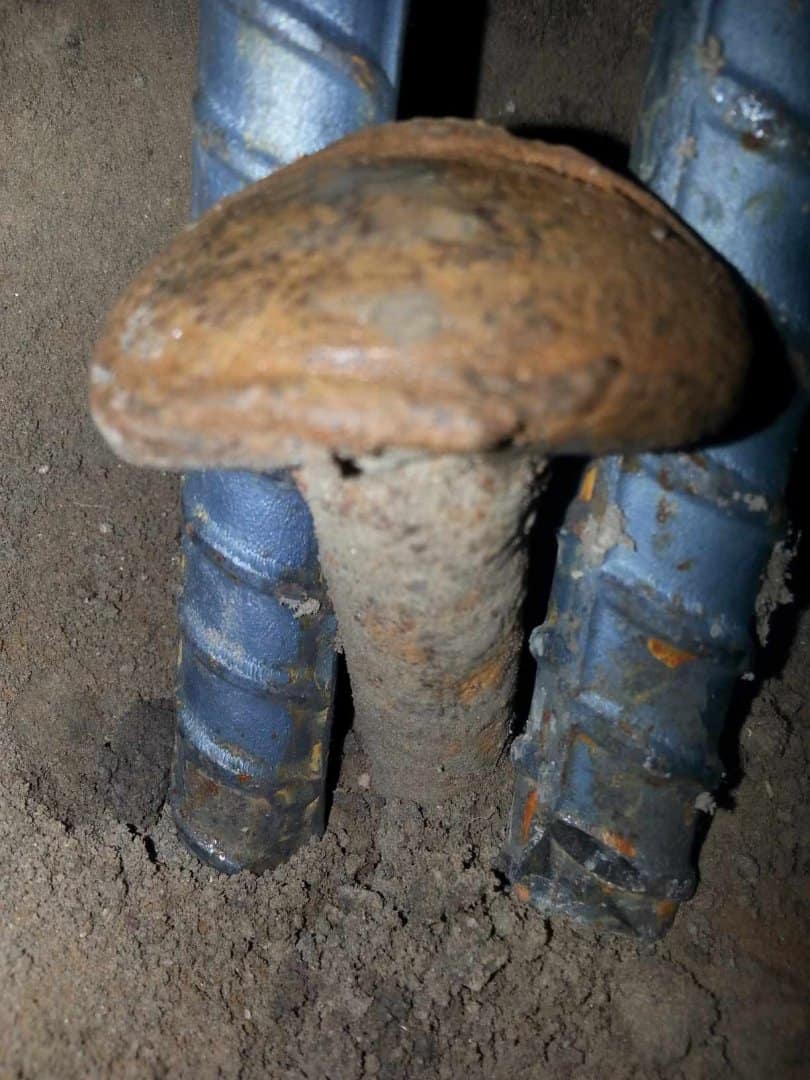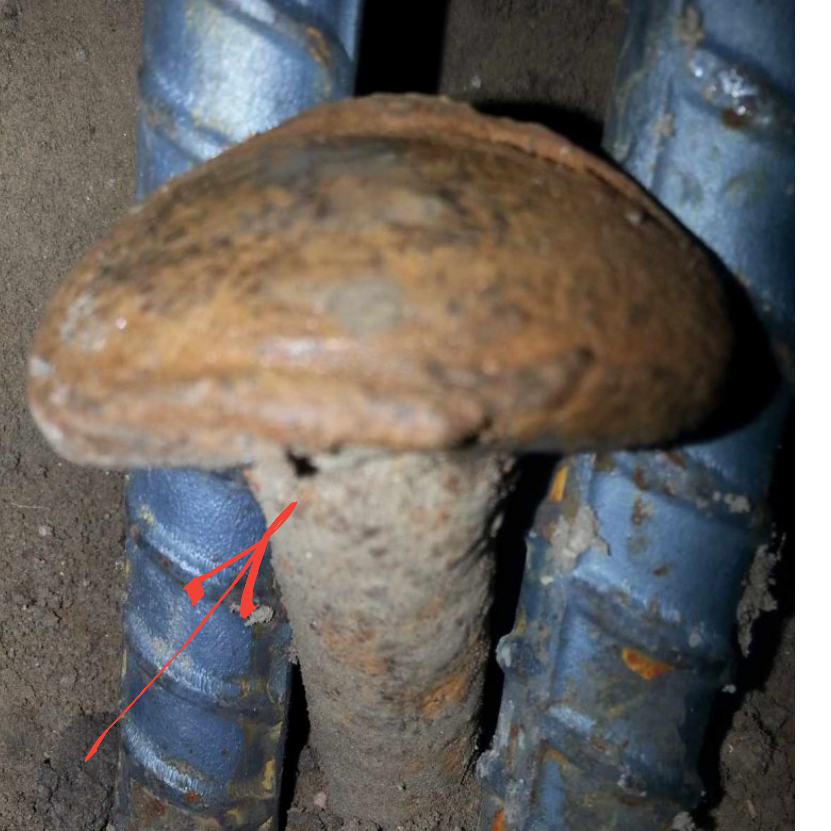I found this today while retracing a subdivision from 1952. Plat calls for "3/4" iron rods" at lot corners. One other lot corner had a head like this, and the others that I found appeared to have heads broken off. I don't know how long it is, but it felt solid. The stem is smooth, not ribbed. This photo shows #5 and #6 rebars for reference.
I've never seen one of these before. What is this thing?
could it be a tamper? for compacting alongside fence posts? I see them in hardware stores occasionally.
Strange. It appears to be deformed or swaged deliberately.
I have seen similar ends on cross braced turnbuckles from girder structures, but not curved on its seating surface. I bet it's a piece of salvage that wound up doing eternity as a property pin.
If it is solid, we would refer to it as a timber bolt. I can't tell from the picture. If it is, it may be threaded further down. It also may have two or three ribs under the mushroom to bit into the wood.
The end looks to have been heated and rolled back to form a cap.
The closest thing to that I can think of is a railroad crosstie spike. It definitely is not one of those. They do have a wide, circular top that is thicker in the center than near the edges. But, not like what is shown.
This reminds me of a subdivision with rear axles, including the lug bolts, used as lot corners. The surveyor was also the operator of a car salvage business.
Around here it would be labeled as "FIP" or "IPF".
Timber or dock bolt. Around here you might find them near old canal locks or RR trestles, along the river in NYC or Philly. Came across a few along the Morris Canal.
Paul in PA
Sergeant Schultz, post: 411672, member: 315 wrote: Around here it would be labeled as "FIP" or "IPF".
Yup that's it!
Thanks, guys. Maybe I'll just go with 3/4" iron rod. Although it does look more like 5/8".
Where abouts are you located? Planting Pins in frozen ground, gravel etc here can do that. Sometimes, sledgehammering an Iron pin into such a surface causes the head to mushroom, especially when using a Pjonjar or Atlas Cobra to drive it in. In winter time in Canada, planting an IP can take about 20 minutes of pounding before it goes in.
I don't think the mushroomed top is from installation. There were two of them that I found that were the same shape. The top is rounded and there is a lip around the edge that is curved up. I'll try to get a better picture if I go back. Original plat is dated April, so the soil should have been soft.
Looks to be a homemade monument.
Maybe a large hot rivet head welded onto the end of a very old/corroded piece of re-bar?
Looks like something that would be driven into the ground to hold a parking stop or driven through pieces of cribbed timber.
Champion Paper Company made us set monuments that look very much like that. They were 1/2" or 5/8" shafts with a 2" domed head and the last 6 or 8 inches was threaded like a VERY large carriage bolt. So, we called them timber carriage bolts.
Kris Morgan, post: 411753, member: 29 wrote: Champion Paper Company made us set monuments that look very much like that. They were 1/2" or 5/8" shafts with a 2" domed head and the last 6 or 8 inches was threaded like a VERY large carriage bolt. So, we called them timber carriage bolts.
I'm curious about the 2 rebar alongside...
Jim in AZ, post: 411771, member: 249 wrote: I'm curious about the 2 rebar alongside...
He added those for size comparison
[USER=833]@Richard[/USER]
That is squared to "seat" the bolt into the wood to keep it in place and from rotating.
Almost looks like a railroad spike pounded into a pipe.





